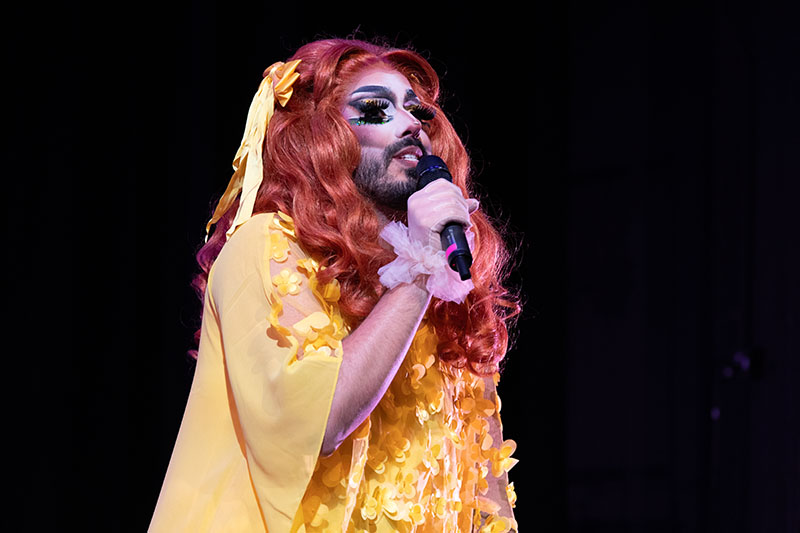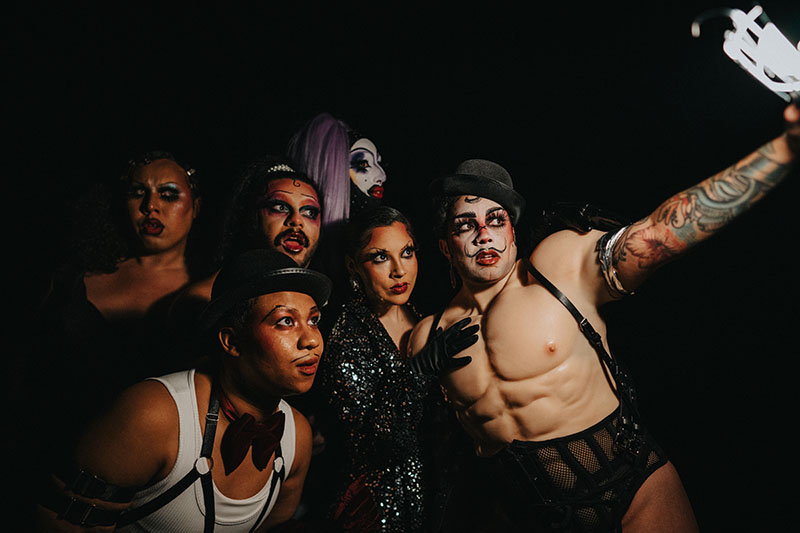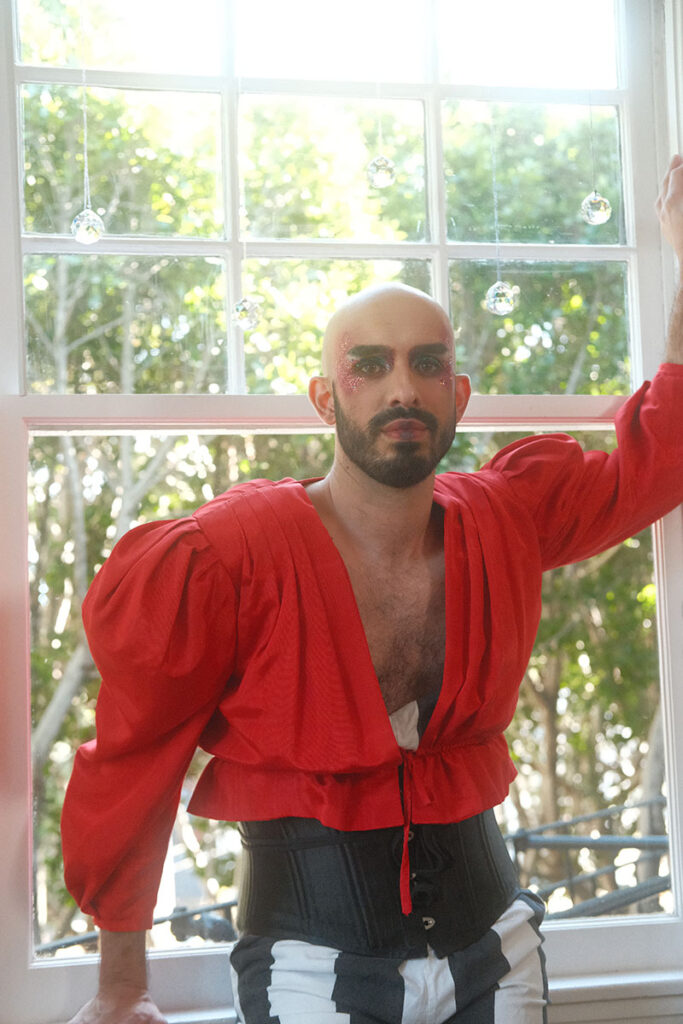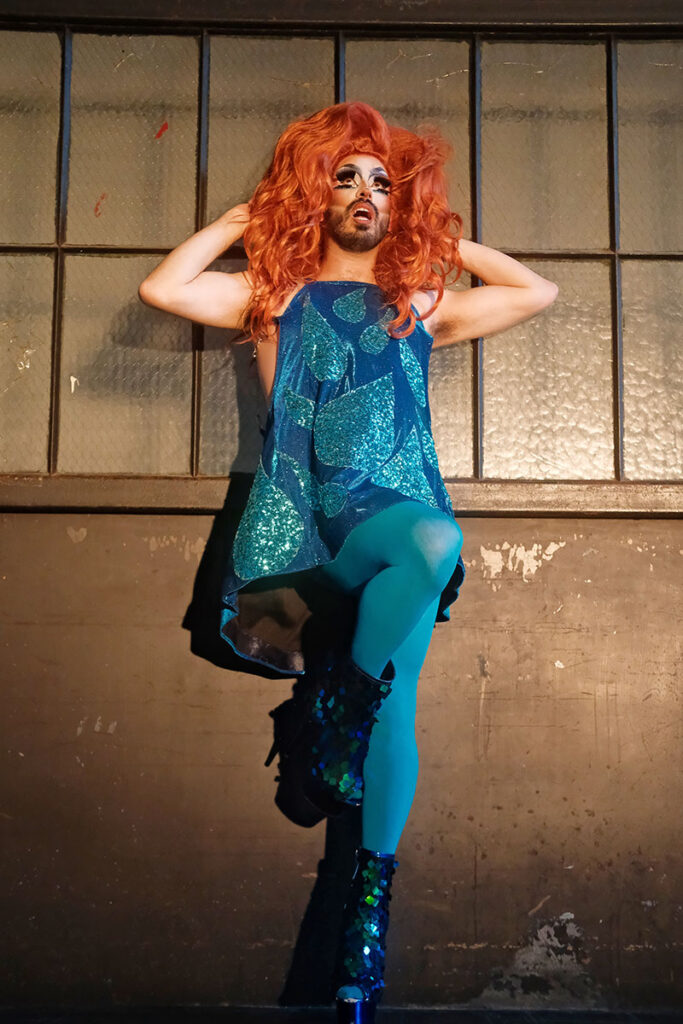Not Just a Funding Cut
October 20, 2025
What the NEA Fallout Reveals About the Arts Sector
BY ERIC GARCIA
Note: This article was published in Stance on Dance’s Fall/Winter 2025 print issue. To learn more, visit stanceondance.com/print-publication.
This Isn’t New
When the news broke that the National Endowment for the Arts (NEA) and National Endowment for the Humanities (NEH) were being gutted again, I felt a sharp mix of rage and déjà vu. The rage was easy: Detour Productions – my company of 15 years – had just become a nonprofit and was finally eligible to apply. We were ready. We were dreaming. We were budgeting around the possibility of that support. The potential $10K to $30K increase in funding wasn’t a cherry on top; it was essential operating support. And just like that, the door slammed shut.
But the déjà vu came from something deeper. A familiar script was playing out. Institutions began releasing statements, funders started issuing reassurances, and everyone on social media suddenly had a lot to say. While I agree we should all be alarmed by this shift, I couldn’t help but notice how many people are reacting like this is new, when in fact, these alarms have been going off for a long time.
What we’re seeing now isn’t a surprise. It’s a culmination. Artists have been naming the inequities, the erasure, the underfunding, and the risk-aversion from large funding sources for years. And the fact that it took this level of crisis for some people to pay attention? That’s part of the heartbreak. Especially for those of us who’ve been building without a safety net for years, pushing forward without ever assuming these systems were built for us.
This isn’t just a story about grants. It’s about who gets supported. Who gets seen. And who always seems to be just outside the frame.
I’m Eric Garcia. Some folks know me as Churro Nomi in the drag scene. Others know me as the co-director of Detour Productions, a queer immersive dance-theater company in San Francisco. I co-host and produce Clutch The Pearls, a monthly queer cabaret. I serve on grant panels, teach workshops, mentor artists, and work as an arts administrator for organizations I believe in. If I had to sum up my work in one sentence, it would be: I am invested in collectively building queer sanctuary spaces – and I fight like hell to keep them funded.
That’s why this moment feels so personal.
When the Trump administration began targeting DEI language and funding, it wasn’t just a dog whistle. It was an outright call to dismantle support for marginalized communities. But the impact of those attacks didn’t just arrive in a press release. It showed up in the trickle-down panic of the arts sector. Grants evaporated. Foundations “realigned.” Programs that had once prioritized BIPOC and LGBTQ+ artists quietly shuttered. And suddenly, some of the most vibrant, community-rooted work I know was on the brink.
This is the backdrop for the NEA/NEH gutting. It’s not a one-off budget cut. It’s the continuation of a larger, more insidious shift: A cultural chilling effect that tells us, explicitly, that our stories are no longer politically convenient. And maybe never were.
What’s been hardest to watch is the performative scramble that’s followed.

Photo by Robbie Sweeny
The Illusion of Inclusion
Many of us remember 2020 when institutions, funders, and organizations rushed to issue equity statements, conduct audits, and launch initiatives. Some of that work was thoughtful and real. A lot of it was reactive, temporary, and optics driven. Now, in 2025, we’re seeing how fragile those commitments really were. Budgets are shrinking, and somehow it’s always the equity line items that get cut first.
Now that the NEA cuts are hitting, suddenly everyone’s a warrior for the arts. But where has that energy been as trans, BIPOC, and disabled artists have been perpetually targeted for a long, long time? When “gender ideology” (sic) was named in the same executive order? When drag bans swept the country and disability programs got slashed?
If an organization only advocates when its own survival is threatened, that’s not advocacy. That’s self-preservation.
I’ve seen too many institutions stay silent on structural harms – evictions, artist displacement, program erasure – only to burst into righteous indignation when their grant cycle gets disrupted. And while I do believe they’re scared, I also believe they’re late. And the rest of us? We’ve been here screaming into the void for years.

Pompeii by Detour Productions, Photo by Robbie Sweeny
Let’s Name the Fear
It’s not surprising that institutions are reacting this way. The arts field, despite its progressive branding, is still largely governed and funded by cisgender, able-bodied white folks. When the political pressure mounts, it turns out a lot of people fold fast. They retreat to what feels “safe,” which often means whiteness, wealth, and legacy institutions. Foundations wrap their divestments in language like “alignment” or “impact,” but let’s name it plainly: it’s fear.
Fear of artists. Fear of risk. Fear of losing control. Fear that real equity might mean real redistribution – not just revising a mission statement but changing who holds the mic.
There’s a line I posted on social media recently from one of my drag alter egos – Churro Bradshaw, my Sex-and-the-City-meets-arts-admin persona: “And I couldn’t help but wonder… in a field built on imagination, why does it take a funding cut for some of us to start imagining each other’s realities?”
That’s what’s really at stake here: not just dollars, but the opportunity to imagine together. To build something new. To share power. And yet, every time the pressure rises, many organizations retreat to the same old hierarchies, erasing the people they once promised to uplift.
The NEA cuts are revealing a truth that many of us have long known: The arts are not immune to white supremacy, transphobia, ableism, or capitalism. In fact, they often reproduce those systems while patting themselves on the back for being inclusive.
I look to Disability Justice as a framework here, which teaches us that solidarity isn’t conditional. We build together, not only when it’s easy or popular, and the people most impacted by injustice should be centered in the response. And yet, what I’m seeing is that the folks most harmed by this moment are still doing the most labor, often with the least protection.
Meanwhile, institutions with well-resourced budgets, donor pipelines, and capital endowments are releasing urgent fundraising pleas. The impact is real, but let’s be honest: The harm is not equally distributed. Losing NEA funding as a legacy institution is wildly different than never having access to that support in the first place.

Photo by Danny Hernandez
We Deserve More Than Survival
So, what needs to change?
First: We have to redistribute. Not just in theory, but in practice. Fund grassroots organizations. Fund collectives. Fund the scrappy, the experimental, the working artists finding refuge in random rehearsal studios and nightclubs and their basement-turned-rehearsal room. Don’t just talk about equity. Move money.
Second: Center care. Not just as a buzzword. Care looks like long-term funding, not one-off grants. It looks like mentorship, infrastructure, access, and trust. It looks like not asking artists to martyr themselves in order to be deemed worthy of support.
Third: Build new models. We don’t need to reinvent the wheel. There are incredible blueprints already out there: BIPOC-led organizations, trans collectives, Indigenous art practices, Disability Justice organizers.
They’ve been doing this work with vision, rigor, and joy long before it became trendy.
And finally: Speak up, especially if you’re in a position of power. Call your representatives. Meet with funders. Write op-eds. If you’re at the table, flip it. Don’t just protect your seat; make room for someone else.
And if you’re an artist reading this, especially one who’s felt shut out, overwhelmed, or unsure where to begin, please know: You’re not alone. You’re not asking for too much. These systems were never designed with us in mind, and yet here we are, making magic anyway.
I do a lot of grant writing mentorship. I got into grant writing because I had to. Surviving as a queer, Latinx, immersive dance-theater drag artist in San Francisco is expensive. I learned how to write grants as a form of survival, and now I teach others to do the same. I offer workshops, I read drafts, I demystify jargon, and I remind people that they’re allowed to ask for support, and that they deserve it.
But let me be clear: I don’t want to be resilient. I’m tired of being resilient. I want artists to be resourced. I want us to be safe. I want us to make wild, expansive, queer art without having to fight tooth and nail for a $5,000, $10,000, or even a $20,000 project grant. We deserve hefty, ongoing, unrestricted support.
Because if we’re not Investing (yes, capital “I”) in the artists who challenge us, hold us, and reflect us, then what exactly are we preserving? Institutions? Status? A sanitized, patriotic version of culture that flatters power but doesn’t interrogate it?
The future of the arts is already here. It’s queer, trans, Black, brown, disabled, Indigenous, community-rooted, and gloriously unbothered by gatekeepers. It’s not waiting for permission. It’s showing up for each other when the grants fall through and the institutions fall short.
To the institutions who are panicking now: We see you. We hear the fear in your voices. Some of us have been moving through this fire for a long time. If you’re truly ready to show up, great. Join us.
We’re imagining a new arts landscape, one rooted in justice, possibility, and collective power. Whether the NEA funds it or not, we’re already building it. Together. Every show, every gathering, every scrappy, joy-filled moment of resistance.

Photo by Dannie Hernandez
~~
Eric Garcia is a San Francisco-based devised dance-theater artist, drag queen, community organizer, and the co-director of Detour Productions. Eric is rooted in the drag and nightlife scene as Churro Nomi, and produces/hosts Clutch The Pearls, a drag cabaret on the first Sunday of every month at Make-Out Room in the Mission District. Learn more at detour.productions.

Responses
There are no comments at this time.
Be the first to start the discussion by filling out the comment form.